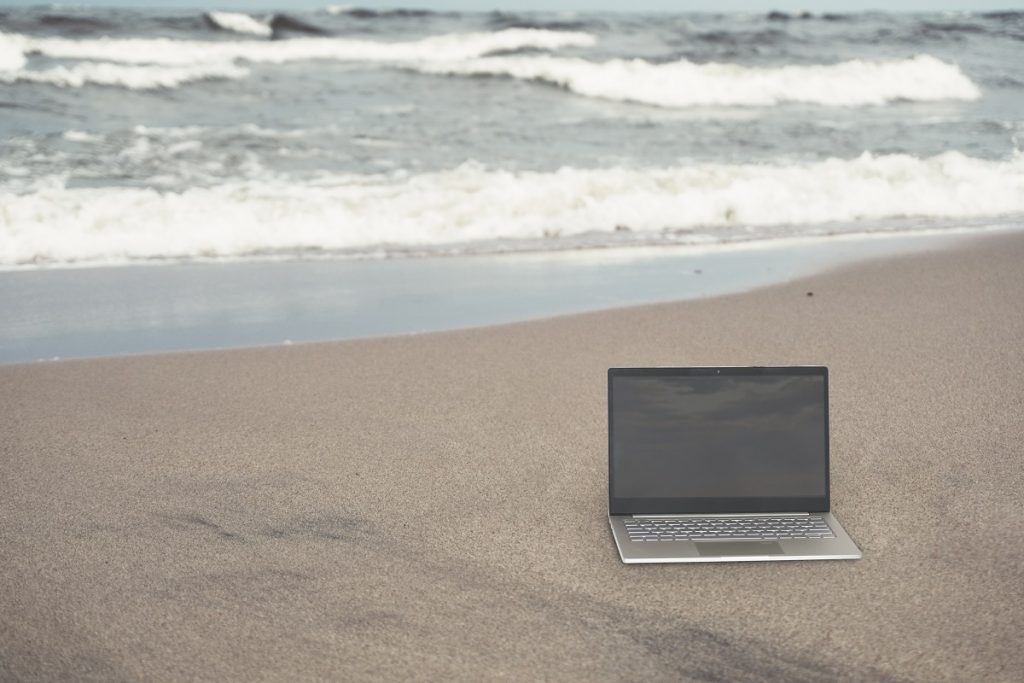If you’re stuck in a full-time job, chances are you’ve considered freelancing at some point. Going solo will provide you with the freedom you may have been yearning for in all aspects of your professional life: you’ll be at liberty to choose when where, and how much you work, pick the projects you’ll be working on, and, crucially, decide how much you earn. But as the saying goes, with great freedom comes great responsibility, and the flip side of the freelancing coin is that it will demand high levels of self-discipline and self-management. It’s important that you weigh up all the pros and cons carefully before taking the plunge. So, let’s review the benefits and drawbacks of building your career as a freelance designer.
5 Benefits of Being a Freelancer
Whether you’re considering switching to freelance ASAP, making a smooth transition or still sitting on the fence, here are some significant perks that might just convert you…
Create your own schedule
This is probably the most obvious benefit of becoming a freelancer – and the most important one for a creative person. It can become extremely monotonous to work in a 9-5, and your artistic abilities really suffer as a result. When you control your hours, you can choose to work for 15 hours straight one day (although this may require copious amounts of coffee) and take a day off the next, when you’re just not feeling that creative flow. This will make you more productive, as you’ll be working when you’re in the ‘zone’, and not sluggishly trying to complete tasks when your brain isn’t functioning as much as it would be on a better day. You also won’t have to spend any unnecessary time or energy on your commute, which, for some, could mean freeing up an extra 2-3 hours each day.
 Photo by Moose
Photo by Moose
Control your income
The big one. Financial freedom is something that the majority of people strive towards, and going freelance is one of the few ways this can be achieved. As a freelancer, you can:
- Set your own prices
- Customize your workload: if you want to earn more, take on more projects
- Save money on travel – after all, a penny saved is a penny earned
Ultimately, the sky’s the limit in terms of income. Your earnings will be limited only by the number of hours you’ll be able to devote to projects, and the prices you’ll set for your work. If you’re just starting out, one of your top priorities should be getting to grips with the basics of marketing yourself as a graphic designer. You’ll need to build up a portfolio and job experience to progress quicker and up your value.
Take your workplace with you
 Photo by Moose
Photo by Moose
You no longer have to sit on a creaky chair behind a desk – just wake up and work from the comfort of your bed in your PJ’s, if that’s what you prefer. Or maybe you love to travel – your ‘office’ doesn’t have to be limited to any particular city or country anymore. Hop on a plane and work from a beach in Bali if you can – just make sure to take your laptop and find a stable internet connection.
Choose your clients and projects
With a creative profession such as graphic design, it’s vital that you can take on the projects you’re interested in, and reject the ones you don’t feel excited about. This may not be the case in the initial stages (more on that below), but it’s something that an experienced freelancer will agree is a huge perk. An added benefit is that when you’re ready, you can choose to move on to more advanced projects. This will keep things fresh and interesting, and allow you to always keep learning and increasing your value as a designer.
You can also choose your clients, and you’re not obligated to work with them long-term (this all depends on the contract, though), so if there was something that you didn’t like – you can always part ways at the end of the project and find someone that you will enjoy working for.
Dip your toes in the water
If you’re working in a different professional sphere, but have graphic design skills and want to gain more experience – freelancing may just be the best way to go about it. You can choose a few projects to work on in your spare time and see if graphic design – and freelancing – is for you. The best thing is, you don’t have to make any commitments and you can transition from your main job to freelancing when you feel ready. If you’re unsure about a creative profession such as graphic design, see what other designers have to say for inspiration and insight.
4 Pitfalls of Being a Freelancer
With all these benefits luring people in, freelancing may seem to be the perfect way to work. It can be tempting to overlook its challenging aspects, but the truth of the matter is, it’s not all great. Freelancing is a double-sided coin, and for every advantage, there’s a drawback. Take time to weigh these up carefully, and consider what you’re willing to compromise on.
High competition and long hours
 Photo by Moose
Photo by Moose
The freelance graphic design market is packed – and you’ll have plenty of competitors willing to take on projects at lower rates with bigger volumes. You’ll have to work a lot when you’re just starting out in order to gain experience and build up a portfolio that will score you better projects. Be ready to put in a lot of time and effort in the beginning stages, and for the payoff to be less than satisfactory.
You’re your own boss
Yep, although it sounds great, being your own boss requires far greater levels of responsibility, which means:
- Managing your time
- Motivating yourself
- Looking for projects and clients independently
- Dealing with clients directly and resolving any conflicts, as opposed to your boss smoothing things over
- Constantly working to maintain a healthy work/ personal life balance
You don’t necessarily need to have these skills to start freelancing as a graphic or user experience designer, but in order to have a successful experience, you’ll definitely need to develop them.
Difficult clients
Certain clients can be very challenging to work with, and sometimes impossible to please. In these cases, you’ll have to be ready to put in extra hours to satisfy their every wish and whim, however strange (read: nitpicky) they may seem.
 Photo by Moose
Photo by Moose
Ultimately, you may put into a lot of work creating a project according to a client’s demands, only to find that they’re still unhappy and have decided not to pay you. There are many potential difficulties, but these are unavoidable in any kind of job, not just freelancing. Just make sure you’re prepared to deal with bad clients in advance, and most importantly, start projects only if you’ve signed a contract.
Irregular paychecks
Some months you’ll have a lot of work and a happier bank balance, but you can never be 100% certain about what the next month will bring and how many projects you’ll be able to score. This results in a fluctuating income, so you’ll have to be ready for dry spells in terms of cash flow.
Final Words
Many freelance designers would agree that, despite any difficulties in the initial stages, the pros definitely outweigh the cons. As long as you’ve carefully weighed up all the advantages and corresponding disadvantages rationally, you’ll be able to make the most informed decision possible. Nevertheless, you’ll never know until you experience it all for yourself. Ultimately, you can always try graphic design freelancing part-time, if you’re not ready to leave your main job. Don’t get disheartened if things don’t go the way you imagined at first – stick out the initial stages and in time, you’ll thank yourself that you did!
About the author: Diana Raz, content writer on technology and design issues
Title image from Ouch, the collection of free vector illustrations
Check the ways helping to become a popular designer, learn how to make money on UI Kits and check the big list of freelance marketplaces for designers